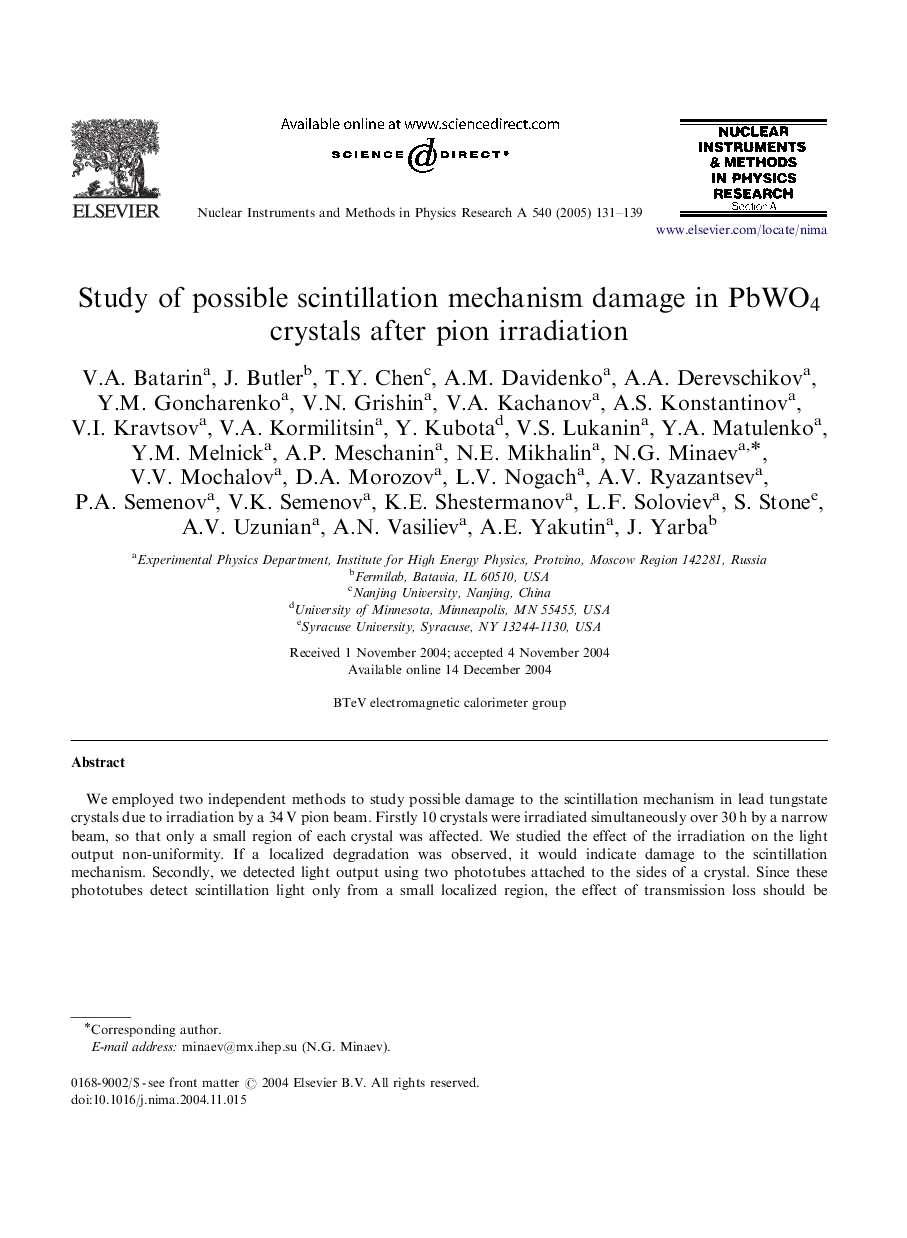| Article ID | Journal | Published Year | Pages | File Type |
|---|---|---|---|---|
| 10717501 | Nuclear Instruments and Methods in Physics Research Section A: Accelerators, Spectrometers, Detectors and Associated Equipment | 2005 | 9 Pages |
Abstract
We employed two independent methods to study possible damage to the scintillation mechanism in lead tungstate crystals due to irradiation by a 34Â V pion beam. Firstly 10 crystals were irradiated simultaneously over 30Â h by a narrow beam, so that only a small region of each crystal was affected. We studied the effect of the irradiation on the light output non-uniformity. If a localized degradation was observed, it would indicate damage to the scintillation mechanism. Secondly, we detected light output using two phototubes attached to the sides of a crystal. Since these phototubes detect scintillation light only from a small localized region, the effect of transmission loss should be minimal. We did not see any statistically significant evidence for scintillation mechanism damage with either method. The effect is consistent with zero, and the upper limit is 0.5% at 95% C.L.
Related Topics
Physical Sciences and Engineering
Physics and Astronomy
Instrumentation
Authors
V.A. Batarin, J. Butler, T.Y. Chen, A.M. Davidenko, A.A. Derevschikov, Y.M. Goncharenko, V.N. Grishin, V.A. Kachanov, A.S. Konstantinov, V.I. Kravtsov, V.A. Kormilitsin, Y. Kubota, V.S. Lukanin, Y.A. Matulenko, Y.M. Melnick, A.P. Meschanin,
